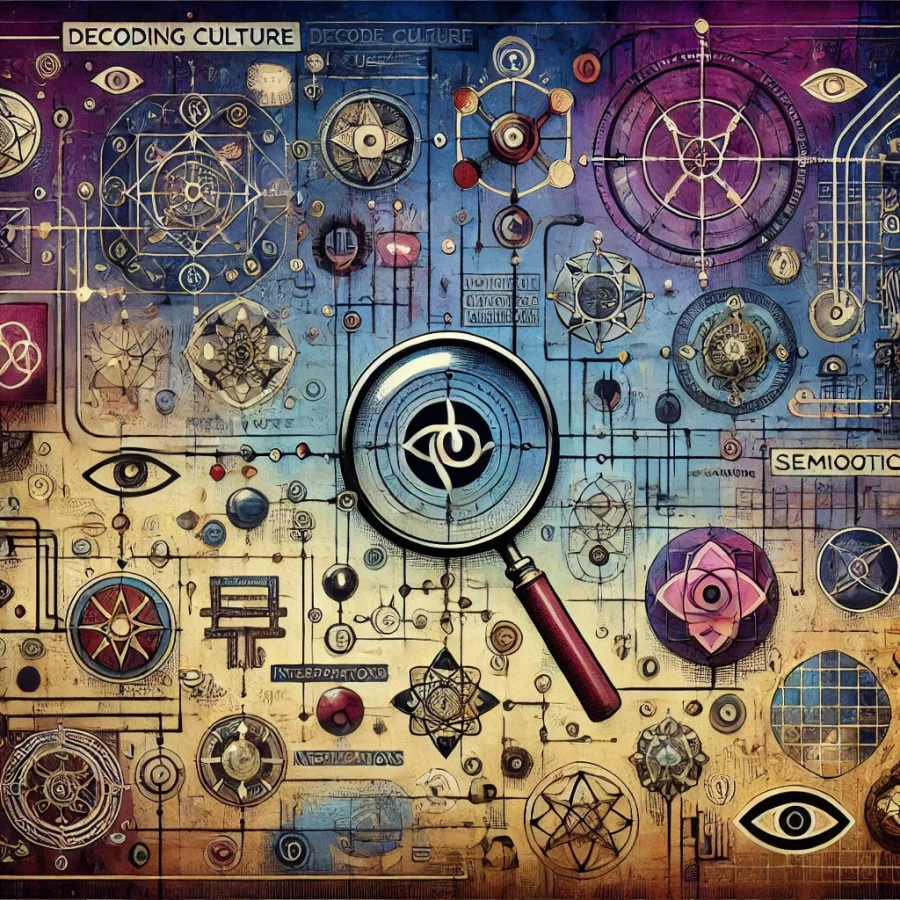By: Grace Westling
In our guest lecture, we explored the idea of semiotics, which is “the study of meaning-making of meaningful communications.” A traffic light is an example of semiotics. When drivers see a red light, they stop. When they see a green light, they go. But, different versions of semiotics differ from person to person depending on their culture. The example given to us in the lecture for this is the backward peace sign in the UK, meaning for someone to “get off”. While in the US the peace sign means all good things.
Semiotics don’t always need signs or symbols; they can be language as well. Fernidad de Saussure, a Swiss linguist and semiotician, stated that for a semiotic to have an effect, it only needs two things: a signifier and the signified. The signifier is the form of a sign or thing being said. While the signified is what the signifier refers to the object as or the meaning it conveys. As we learned, meanings differ from individuals depending on their backgrounds.
As an American, the language used in the UK has been the largest learning curve for me. For example, the difference between crisps and chips. In the US, we refer to chips as a bag of Lays, while in the UK, refer to them as crisps. Keeping the term chips for something to go along with your fish. In the UK, people use the term “cheers” a lot more. It means thank you or goodbye. In the US, that term is used for cheering drinks together in a celebration.
In Stuart Hall’s, ‘Encoding/Decoding’, he explains the three different ways that the audience can decode the message that media encodes. One, dominant-hegemonic position: the audience fully accepts the intended message. Two, negotiated position: the audience partially accepts the intended position but adapts it to fit their own personal beliefs and experiences. Three, oppositional position: the audience understands the intended message, but rejects it.

A recent example of the media successfully decoding the intended message is in the 2023 “Barbie” movie. Director, Greta Gerwig layered ideas of feminity, societal expectations, and societal roles. While most of the audience accepted the message (dominant-hegemonic position), some people had differing views. The movie received backlash due to the idea that the movie was spreading and promoting consumerism (oppositional position). Due to the ties with the creator of Barbie, Mattel. As well as the copious brand deals the movie had. For example the collaboration with Stanley, creating a Barbie pink tumbler. The differing views of the movie show that communication is a circuit. Hall explains that communication is not linear. Encoding and decoding do not always create a direct transfer of the intended meanings.

So, while the media may have an intended message in mind. The likelihood of everyone accepting that message is slim to none. Based on everyone’s own personal experiences as well as their cultural background.
Sources:
- Hall, S. (2006). ŌĆśEncoding/DecodingŌĆÖ, in Durham, M.G. & D. Kellner (2006), Media and Cultural Studies: Key works, Malden, MA: Blackwell, pp.163-17


Really interesting post! I love how you used such an iconic example from last year, The Barbie movie, as it sparked many controversies, it’s a really clever way to explain the encoding and decoding model. In particular, I think it is really interesting how you mentioned that people do not always receive the intended message due to personal experiences/ cultural background as with Barbie i recall seeing many men post about how they did not understand the ‘hype’ of the film and did not understand why women were relating to it so much.
I really enjoyed reading this blog! The examples, especially the Barbie movie, made the concepts of semiotics and Stuart HallŌĆÖs encoding/decoding theory so easy to understand. ItŌĆÖs fascinating how personal and cultural experiences shape the way we interpret messages. IŌĆÖd love to see even more examples of oppositional readings, but overall, this was an engaging pieceŌĆögreat job!